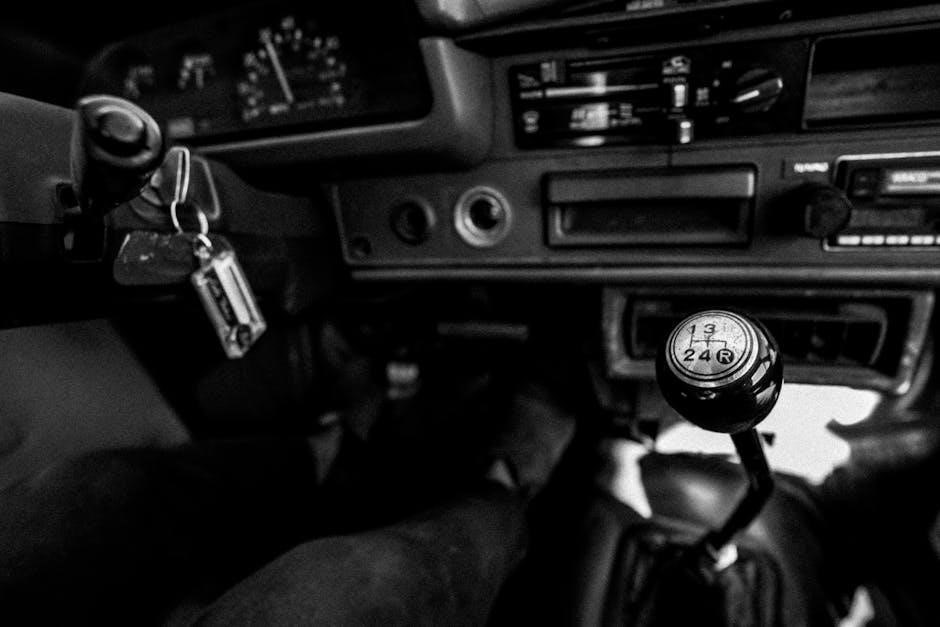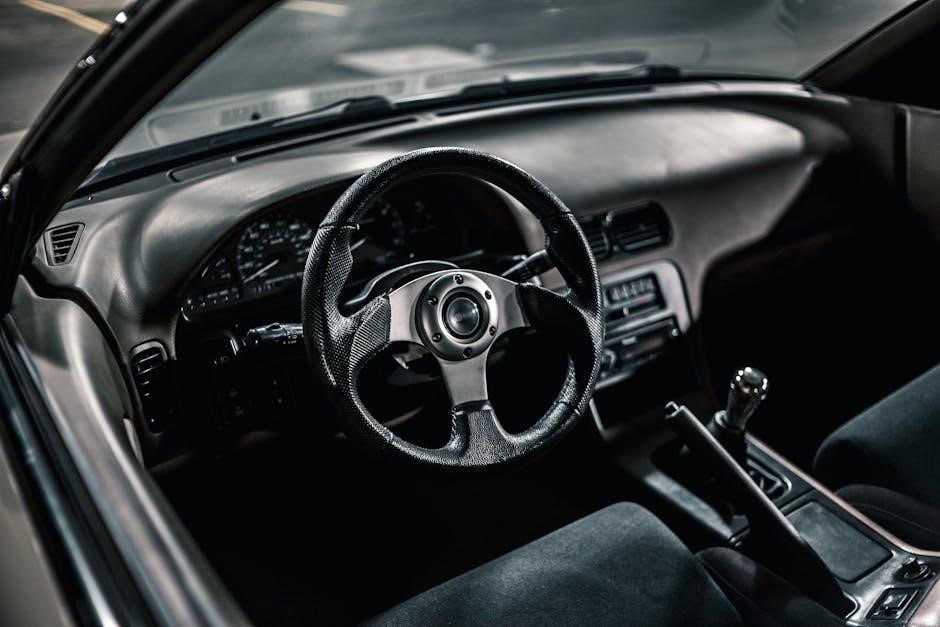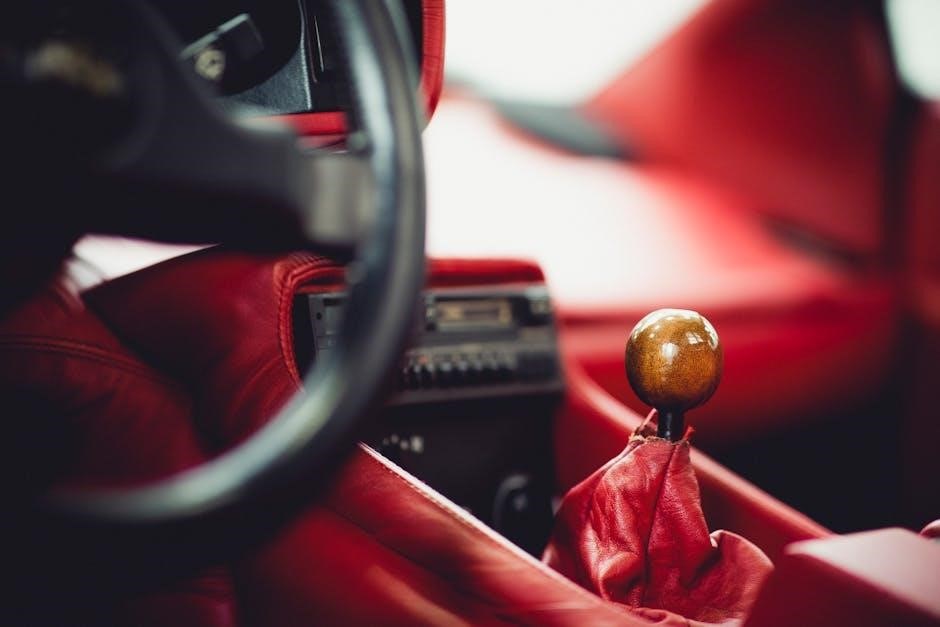Learning to drive a manual transmission car is an essential skill that enhances control and confidence behind the wheel. With professional instructors, you can master clutch control, smooth gear shifts, and safe driving practices. Manual driving lessons are tailored to all skill levels, offering personalized instruction to help you become proficient in operating a stick-shift vehicle. Whether you’re a beginner or looking to refine your skills, expert guidance ensures a comprehensive understanding of manual driving techniques. Start your journey today and discover the freedom of driving a manual car with confidence and precision.
What is a Manual Transmission?
A manual transmission, also known as a stick shift, is a type of car transmission that requires the driver to manually change gears using a clutch pedal and gearshift. This system allows the driver to control gear changes based on speed and acceleration, providing a more engaging driving experience. The key components include the clutch pedal, gearshift, and a set of gears that connect to the engine.
Why Learn to Drive a Stick Shift?
Learning to drive a stick shift offers enhanced control, cost savings, and improved fuel efficiency. Manual transmissions often cost less to purchase and maintain than automatics. They provide better fuel economy and a more engaging driving experience. Additionally, knowing how to drive a stick shift increases versatility, as many cars worldwide are manual. It’s a valuable skill for emergencies and can be advantageous in certain job or rental situations.
Basic Components of a Manual Car
A manual car consists of a clutch pedal, gearshift, and manual transmission. The clutch pedal disconnects the engine from the transmission, allowing gear changes. The gearshift selects the desired gear, while the transmission houses the gears and shafts. These components work together to provide driver control over speed and torque, enabling precise acceleration and smooth transitions between gears during operation.

Steps to Drive a Stick Shift Car
Mastery begins with clutch control, smooth gear shifting, and coordinated acceleration. Practice starting, stopping, and reversing to build confidence and achieve seamless transitions while driving;
Clutch Control and Gear Shifting Basics
Mastering clutch control and gear shifting is fundamental to driving a manual car. Press the clutch fully down with your left foot, shift into neutral, and ease off slowly. Coordinate clutch release with accelerator input to avoid stalling. Use the gearshift to select the appropriate gear based on speed and terrain. Smooth transitions require practice and a feel for the car’s rhythm.
Starting from a Stop
Starting from a stop in a manual car requires coordination. Press the clutch fully down, shift into first gear, and slowly release the clutch while pressing the accelerator. As the clutch engages, feel for the car to start moving. Avoid sudden acceleration to maintain control. Practice this process in a safe, flat area to build muscle memory and confidence in starting smoothly.
Shifting Gears While Moving
Shifting gears while moving requires smooth coordination between the clutch and accelerator. As you press the clutch down, move the gearshift to the desired gear. Release the clutch slowly while accelerating to match the gear with your speed. Listen to engine sounds to determine the right time to shift. Practice shifting gears at various speeds to master the technique and ensure smooth transitions.
Stopping and Downshifting
When slowing down, downshift to a lower gear before coming to a stop to maintain control. Press the clutch smoothly as you downshift, ensuring the gear matches your speed. Avoid sudden movements and ride the brakes. Downshifting helps reduce brake wear and provides better control, especially on inclines. Practice this technique to master smooth stops and maintain vehicle stability during deceleration.
Reverse Gear and Parking
To engage reverse gear, press the clutch fully, shift into reverse, and check your surroundings. Look over your shoulder and use mirrors for visibility. When reversing, move slowly and straighten the car before stopping. For parking, align with the space, signal, and maneuver carefully. Always neutralize the car and apply the brake after parking to ensure safety and control.
Benefits of Learning to Drive a Manual Car
Learning to drive a manual car offers improved control, better fuel efficiency, and enhanced driving enjoyment. It also provides cost savings on vehicle purchases and repairs, making it a valuable skill for lifelong driving confidence and versatility behind the wheel.
Improved Control Over the Vehicle
Manual driving provides direct control over acceleration and gear changes, allowing smoother transitions and better connection with the car. Drivers can modulate speed precisely, especially in challenging conditions like hills or sharp turns, enhancing overall handling and safety. This increased mechanical engagement fosters a deeper understanding of the vehicle’s behavior, making you a more attentive and responsive driver.
Cost-Effectiveness
Manual cars are often more affordable to purchase and maintain than automatics. They typically have lower production costs and fewer complex components, reducing repair expenses. Additionally, manual vehicles generally offer better fuel efficiency, saving money on gas over time. Learning to drive a stick shift can also lower insurance premiums and provide access to cost-effective rental options when traveling.
Better Fuel Efficiency

Manual transmission cars generally achieve better fuel efficiency than automatics due to their mechanical simplicity. Without the torque converter, manual cars convert engine power to movement more effectively, reducing fuel consumption. Drivers can optimize gear shifts to suit driving conditions, further enhancing mileage. This makes manual vehicles a cost-effective choice for commuters and environmentally conscious drivers seeking to minimize fuel usage and lower emissions.
Enhanced Driving Experience
Driving a manual car offers a more engaging and immersive experience, connecting you directly to the vehicle. The ability to control gears and clutch engagement provides a sense of mastery and satisfaction. Manual driving demands active participation, making every journey feel purposeful and enjoyable. This hands-on approach fosters a deeper connection to the road, enhancing overall driving satisfaction and making the experience more rewarding and fulfilling for drivers.
How to Find the Right Driving Instructor
Look for instructors with proven experience in teaching manual transmissions. Check reviews and ask for recommendations to ensure they offer structured, effective lessons tailored to your needs.
Qualifications and Experience
Ensure your instructor has certifications and extensive experience teaching manual transmissions. Look for instructors with proven track records and positive reviews. Many reputable driving schools offer expert guidance, with instructors who specialize in stick-shift training. Their hands-on experience and structured lesson plans will help you master manual driving efficiently. Prioritize instructors with years of teaching experience for the best results.
Reviews and Recommendations
Research driving schools with positive reviews and high ratings for manual transmission lessons. Look for testimonials from students who successfully learned stick-shift driving. Recommendations from friends or online forums can help identify reputable instructors. Pay attention to feedback about teaching styles, patience, and effectiveness. A well-reviewed instructor with a track record of success is more likely to provide a quality learning experience.
Lesson Structure and Availability
Manual stick shift driving lessons are typically structured in 2-4 hour sessions, allowing for personalized instruction. Lessons are available at various locations, with flexible scheduling to accommodate different timelines. Many schools offer tailored programs for beginners, ensuring a gradual learning curve. Practical experience is prioritized, with instructors focusing on real-world scenarios to build confidence and proficiency in manual transmission driving.

Common Mistakes to Avoid
Avoid common errors such as incorrect clutch usage, poor gear shifting, and frequent stalling. Practice in empty spaces to refine coordination and build confidence gradually.
Incorrect Clutch Usage
Incorrect clutch usage is a common mistake that can lead to wear and tear on the transmission. Riding the clutch or partially pressing it can cause unnecessary strain. Avoid sudden or jerky movements, as this can stall the car or damage components. Proper clutch control involves smooth, deliberate presses and releases, ensuring the clutch engages fully. Practice in a safe, open area to develop muscle memory and avoid bad habits.
Poor Gear Shifting Technique
Poor gear shifting technique can lead to jerky movements, grinding gears, and premature wear on the transmission. Avoid shifting too quickly or without fully engaging the clutch. Smooth, deliberate shifts are key to maintaining control and minimizing damage. Practice shifting at the correct RPMs and always use the clutch fully to ensure seamless transitions between gears for a smoother driving experience.
Stalling the Car
Stalling is a common issue when learning to drive a manual car, often caused by poor clutch control or incorrect gear selection. To avoid stalling, listen to the engine’s RPMs and release the clutch slowly while pressing the accelerator. Practice in a safe, flat area to build muscle memory and confidence. Smooth coordination between clutch and accelerator is key to preventing stalls and ensuring smooth starts.

The Future of Manual Transmission Cars
Manual transmissions are declining in modern vehicles, yet their appeal endures among driving enthusiasts, offering unmatched control and connection to the road, ensuring their niche remains relevant.
Declining Popularity in Modern Vehicles
Manual transmissions are becoming less common in new cars, with only 4% of U.S. sales featuring stick shifts. Automatics dominate due to convenience, especially in stop-and-go traffic. Despite this decline, manuals remain popular among driving enthusiasts for their control and connection to the driving experience.
Why Manual Cars Are Still Relevant
Manual cars remain relevant due to their cost-effectiveness, better fuel efficiency, and enhanced driver engagement. They offer more control and a closer connection to the vehicle, making driving more enjoyable. Additionally, manual transmissions are often more reliable and require less maintenance. For enthusiasts, the skill of driving a stick shift is a valuable asset, even as automatics dominate modern vehicles.
Skills for Life
Mastering a manual transmission equips you with lifelong driving skills, enhancing your ability to control and connect with your vehicle. It fosters confidence, adaptability, and situational awareness, essential for any driving scenario. The ability to handle a stick shift also broadens your options when renting or purchasing cars, ensuring versatility and independence. This skill remains valuable, even as automatics prevail, offering a sense of accomplishment and mastery.